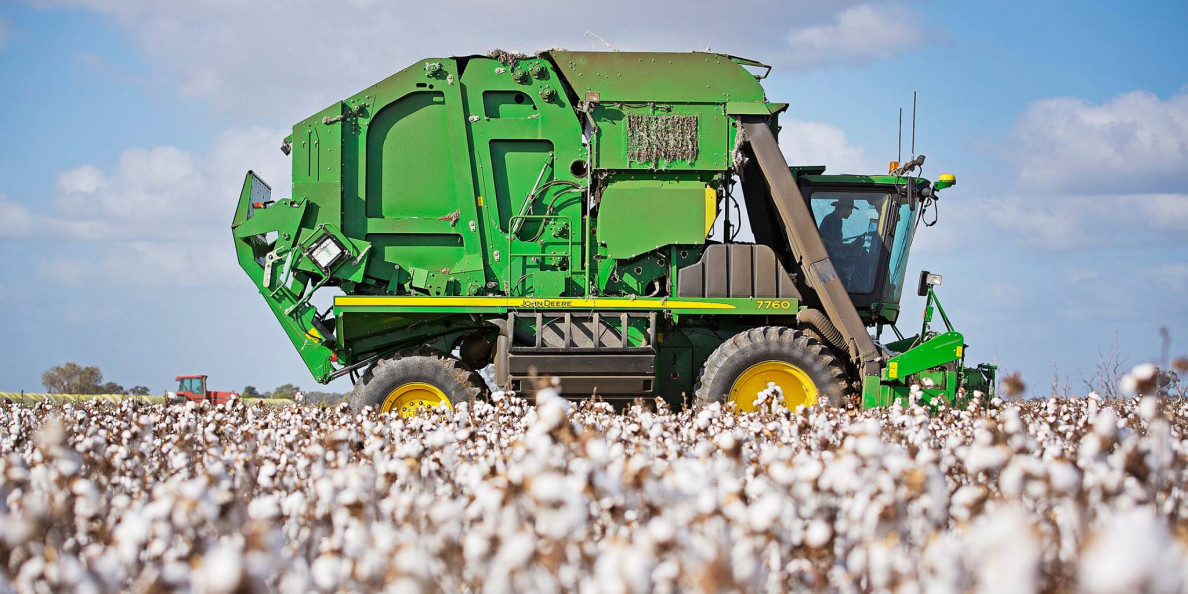By Jeff Thompson, Autauga Quality Cotton Association
The expression, “You can’t make a silk purse from a sow’s ear,” aptly describes the current cotton market. Even the recent uptick in prices has generated little excitement .
With few underlying positives to be found, it’s instead looked upon as a small rally in a generally bearish market.
Cotton prices have fallen 20 cents since the beginning of the year, dipping into the forties last week, albeit briefly. We last experienced this in March 2009 as a result of the financial crisis. Disturbingly, Covid-19’s impact on the global economy will far surpass that of the financial meltdown. It’s encompassing reach touches almost every point on the globe, making it elusive and extremely difficult to manage.
How Much Hurt?
A global recession certainly awaits us. However, the severity is yet to be known. Necessary containment efforts are exacting a heavy toll on the economy, especially the cotton trade. Cotton fundamentals, once favorable, have weakened significantly as the supply chain falls victim to the economic trickle-down effect.
With retailers on lockdown, consumer purchases of apparel and other textile products have come to a halt. In turn, textile manufacturers are experiencing order cancellations, thereby requiring them to delay shipments or renegotiate previous purchases from merchants.
Manufacturing facilities, if not closed, are running at reduced capacity. Punctuating this are numerous reports from local warehousemen who tell us after frantically loading cotton through January, shipping orders have now been significantly curtailed. This hasn’t been reflected in weekly export sales to date, but likely will show up in the weeks ahead.
It is very possible the world consumption could decline by as much as five to ten million bales this coming year versus last.
How Many Acres?
With that in mind, let’s look at the supply side of the equation. The USDA planting intentions report released last week, not surprisingly, was at odds with producer sentiment and other trade estimates.
They predict planted cotton acres in the U.S. will remain unchanged from last year at 13.7 million acres, with corn up 8% and soybeans up 10%. With peanut planting likely to increase, one must ask at what crop’s expense are these added acres coming from?
Nevertheless, if true, using historical averages for yield and abandonment, this would translate into a U.S. crop of 23 million bales. If world consumption does decline to the extent previously mentioned, anything over a 15-million-bale crop will be a burden on the market.
Supporting us is the marketing loan program, which by design will allow us to be more competitive in the global market. However, supply and demand will be a major concern going forward.
Double Witching This Week
In search of something positive, the charts are signaling oversold conditions as several moving averages are being crossed. But apparently these signals aren’t strong enough to encourage specs to liquidate short positions.
Be aware that Thursday, April 9, is a double witching day. Two very important reports certain to garner the attention of the specs and other market movers will be issued.
- First, we’ll see the weekly export sales report. It will be interesting to note if the string of good numbers will continue or if, for the first time, reflect expected demand destruction.
- Later in the day, USDA will release its April WASDE report. As skeptical as I am of their planting intentions numbers, I dread what this report might unveil.
In such unchartered economic times, I don’t think there is anyone with enough economic degrees to confidently predict what lies on the other side of this.
How soon we recover depends on so many unanswered questions – such as the length and depth of the recession, the financial ability of shuttered stores to reopen, post-virus consumer behavior, and available credit to name a just a few.
Implementation of the stimulus package and talk of additional assistance, if necessary, has driven the stock market to regain some prior losses and can likely be attributed to cotton’s recent advances.
On another good note, we seem to be nearing a flattening of the curve in some of the most infected areas. Our prayer is for continued healing on the front lines and patience for all.
Closely Track the LDP
As for marketing plans going forward, those still looking to price old crop cotton not currently on call should watch the LDP closely each week.
To assist you, Choice Cotton posts updates and estimates of LDP movement throughout the week on its Facebook, Twitter, and Instagram. Currently at 9.37 cents, it’s expected to fall to around 8 cents Thursday night.
Let me give a word of caution, though. Taking the POP or redeeming for an MLG without selling it at the same time exposes one to undue futures market risk and added warehouse expenses. If you want to hold out for higher prices, leave the cotton in the loan or put it in loan if eligible. It offers the safest haven while you wait for prices to improve.
Quickly looking ahead to next year, there is no immediate need to do anything at the moment. Of course, those of you in cooperatives are taken care of while others can wait for basis improvement knowing the marketing loan is available, as well. 2020 is shaping up to be a year where creativity in marketing could prove very beneficial. Choice Cotton would like to work with you to devise a marketing strategy best suited for your operation. Call us at 334-365-3369 for assistance.


